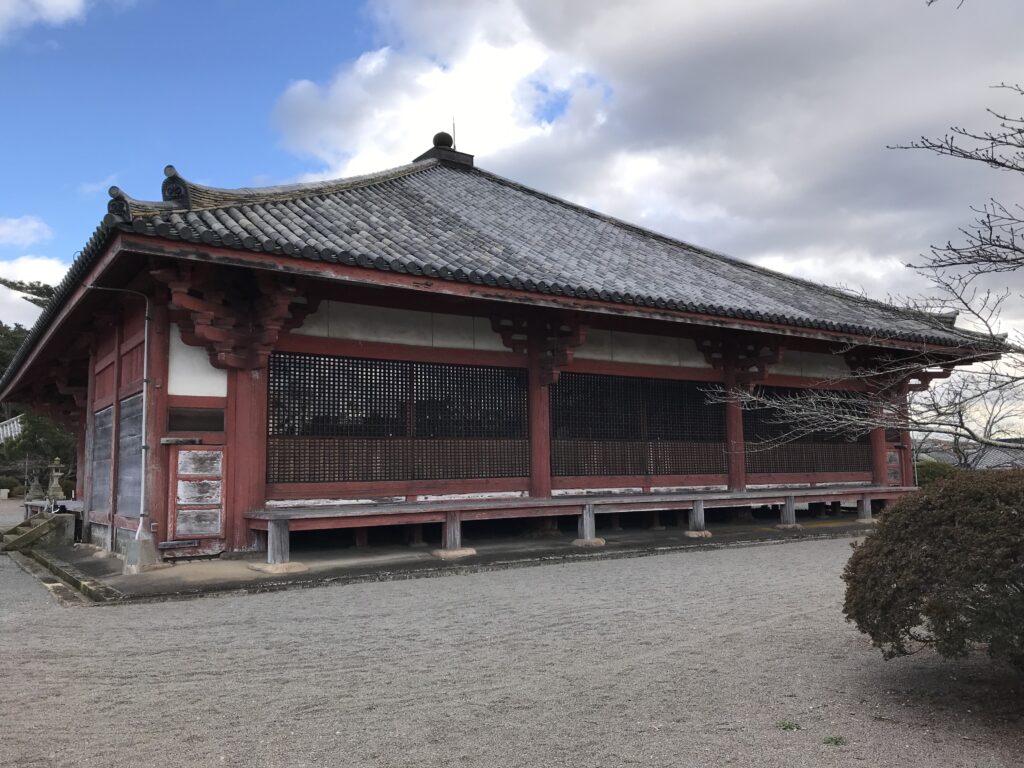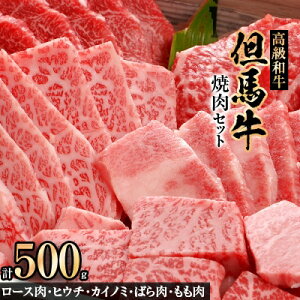日本の木造建築に関する本を買った際に、このお寺の阿弥陀堂が紹介されていました。鎌倉時代に奈良の東大寺の大仏殿を再建した重源が建てたお寺で、一本の柱から何本もの横木を貫構造で組んでいます。この南宋様式が現存するのは、ここと東大寺の南大門ぐらいと言われています。

それ以来、訪問する時期をうかがっていましたが、そのチャンスに恵まれませんでした。今回、意を決して訪問することにし、大阪からJR線で加古川まで来て、そこから加古川線という支線に乗り継ぎ、また、神戸電鉄にも乗り換えて、最寄り駅に到着しました。当日は滋賀県の米原で雪が激しく、JR線のダイヤが乱れていたため、当初乗ろうとしていたバスには乗れず、タクシーでお寺まで行きました。

お寺の境内は、閑散としていて、訪問しているのは数名程度です。早速、国宝の浄土堂(阿弥陀堂)に向かいます。外から建物を見ると、想像していたよりも、小さく感じました。中に入ると、靴を脱ぐので足元から床の冷たさが伝わってきます。お堂内では阿弥陀三尊立像が出迎えてくれました。横に置いてある音声ガイドのスイッチを押すと、お堂と仏像の解説が堂内に響き渡りました。

お寺の方にお聞きすると、7月頃の夕方、阿弥陀様の背後から西日が差し込み、黄金色の光の中、阿弥陀様と他の2体の像が、神々しく見えるそうです。訪問当日は年末の寒い日で、日の光は南側から少し入るだけでした。ただ、お参りした後、目を開けると南からの光が入っていて、仏さまが輝いていました。私を歓迎してくれたと、嬉しくなりました。

堂内を巡って、柱と横木の貫構造を、間近で確認します。たくさんの横木が、その先の屋根を支えています。天井が無いので、柱と横木が屋根を支えている様子を直に見ることが出来ます。堂内は撮影禁止なので、お寺でいただいたパンフレットの写真を載せておきます。興味のある方は、インターネットでご確認ください。(完)
浄土寺の御朱印

兵庫県のおみやげ

【ふるさと納税】但馬牛焼肉セット【500g】【1098409】
価格:25,000円
(2021/12/22 21:31時点)
感想(0件)
Jodoji Temple (Ono City, Hyogo Prefecture)
When I bought a book on wooden architecture in Japan, the Amida Hall of this temple was introduced to me. The temple was built by Chogen (Japanese Buddhist Monk), who rebuilt the Great Buddha Hall of Todaiji Temple in Nara during the Kamakura period. It is said that only this temple and the Nandaimon Gate of Todaiji Temple still exist in this Southern Song style.
Since then, I have been waiting for the right time to visit the temple, but never got the chance. This time, I decided to make a visit, and took the JR line from Osaka to Kakogawa, and then transferred to the Kakogawa line, and also to the Kobe Electric Railway, before arriving at the nearest station. On that day, it was snowing heavily in Maibara, Shiga Prefecture, and the timetable of the JR line was disrupted, so I couldn’t take the bus that I had originally planned to take, and took a cab to the temple.
The precincts of the temple were deserted, with only a few people visiting. I immediately headed for the Jodo Hall (Amida Hall), a national treasure. Looking at the building from the outside, I felt that it was smaller than I had imagined. Once inside, I took off my shoes and felt the coldness of the floor beneath my feet. Inside the hall, I was greeted by a standing statue of Amida Tripitaka. When I pressed the switch on the audio guide placed beside it, the commentary on the hall and the Buddha statues echoed through the hall.
According to the temple staff, in the evening around July, the western sun shines in from behind the Amitabha, and in the golden light, the Amitabha and the other two statues look divine. On the day of my visit, it was a cold day at the end of the year, and only a little sunlight was coming in from the south. However, after paying my respects, when I opened my eyes, the light from the south was coming in, and the Buddha was shining. I was happy to see that he welcomed me.
I toured around the hall to check out the pierced structure of the pillars and crossbeams up close. Many crossbeams support the roof beyond. There is no ceiling, so you can directly see how the pillars and crossbeams support the roof. Since photography is not allowed inside the temple, I’ll post a photo from a pamphlet I received at the temple. If you are interested, please check the Internet. (End)
Temple Jodoji (ville d’Ono, préfecture de Hyogo)
Lorsque j’ai acheté un livre sur l’architecture en bois au Japon, on m’a présenté la salle Amida de ce temple. Le temple a été construit par Chogen (moine bouddhiste japonais), qui a reconstruit la salle du Grand Bouddha du temple Todaiji à Nara pendant la période Kamakura. On dit que seuls ce temple et la porte Nandaimon du temple Todaiji existent encore dans ce style Song du Sud.
Depuis lors, j’ai attendu le bon moment pour visiter le temple, mais je n’en ai jamais eu l’occasion. Cette fois-ci, j’ai décidé de m’y rendre et j’ai pris la ligne JR d’Osaka à Kakogawa, puis j’ai changé pour la ligne de Kakogawa, et aussi pour le chemin de fer électrique de Kobe, avant d’arriver à la gare la plus proche. Ce jour-là, il neigeait abondamment à Maibara, dans la préfecture de Shiga, et les horaires de la ligne JR étaient perturbés. Je n’ai donc pas pu prendre le bus que j’avais initialement prévu de prendre, et j’ai pris un taxi pour me rendre au temple.
L’enceinte du temple était déserte, avec seulement quelques personnes en visite. Je me suis immédiatement dirigé vers le Jodo Hall (Amida Hall), un trésor national. En regardant le bâtiment de l’extérieur, j’ai eu l’impression qu’il était plus petit que je ne l’avais imaginé. Une fois à l’intérieur, j’ai enlevé mes chaussures et senti la froideur du sol sous mes pieds. À l’intérieur de la salle, j’ai été accueilli par une statue debout d’Amida Tripitaka. Lorsque j’ai appuyé sur le bouton de l’audioguide placé à côté, le commentaire sur la salle et les statues de Bouddha a résonné dans la salle.
Selon le personnel du temple, le soir, vers le mois de juillet, le soleil occidental brille derrière l’Amitabha, et dans la lumière dorée, l’Amitabha et les deux autres statues ont un aspect divin. Le jour de ma visite, c’était une journée froide de fin d’année, et seule une petite lumière du soleil entrait par le sud. Cependant, après avoir présenté mes respects, lorsque j’ai ouvert les yeux, la lumière du sud entrait et le Bouddha brillait. J’étais heureux de voir qu’il m’avait accueilli.
J’ai fait le tour de la salle pour voir de près la structure percée des piliers et des poutres transversales. De nombreuses poutres transversales soutiennent le toit situé au-delà. Il n’y a pas de plafond, on peut donc voir directement comment les piliers et les traverses soutiennent le toit. Comme il est interdit de photographier à l’intérieur du temple, je vais publier une photo tirée d’une brochure que j’ai reçue au temple. Si vous êtes intéressé, veuillez consulter l’Internet. (Fin)
